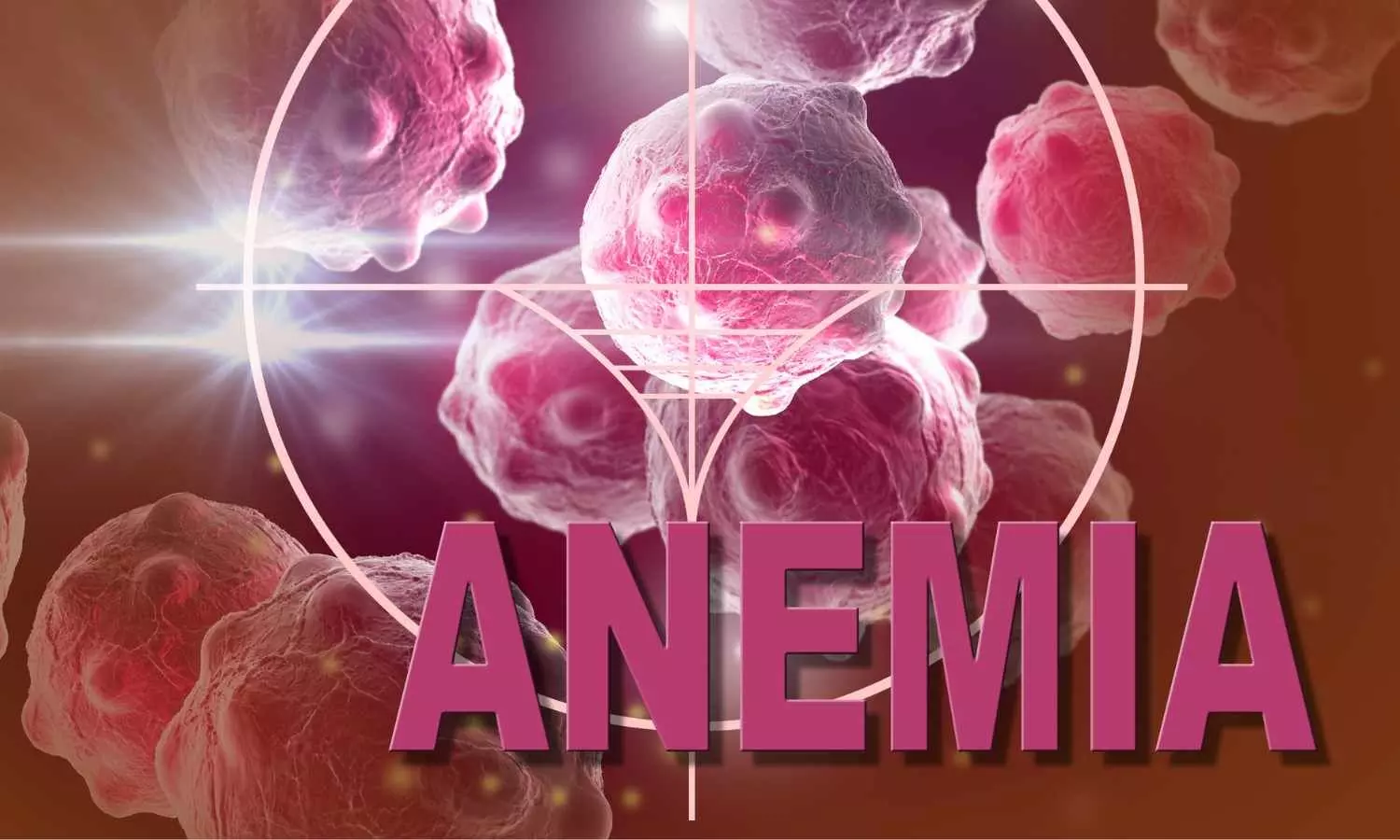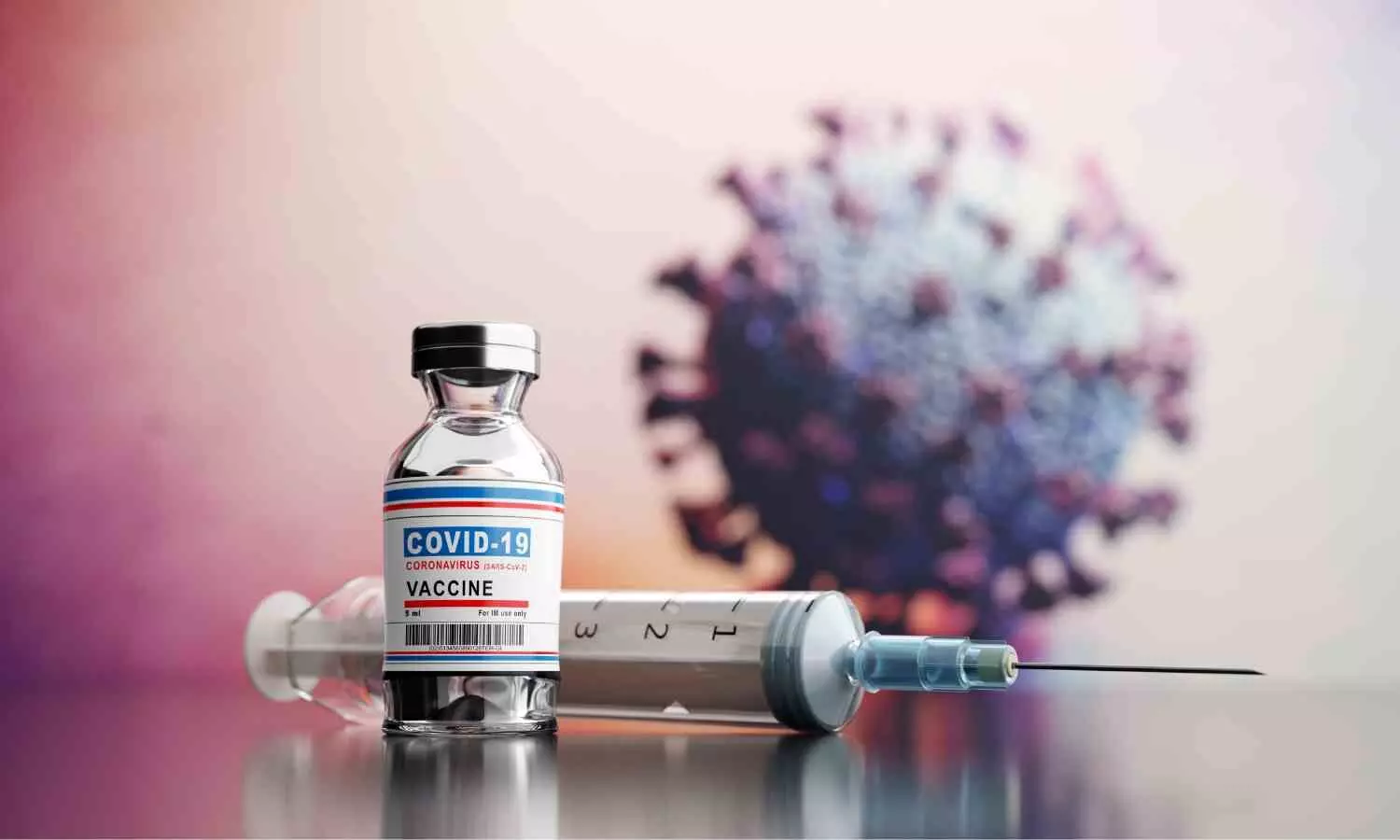From science fiction to telemedicine: The surprising 150-year history of long-range medical treatment
Powered by WPeMatico
Powered by WPeMatico
Powered by WPeMatico
Powered by WPeMatico
Powered by WPeMatico

Rajkot: Union Health Minister JP Nadda visited the All India Institute of Medical Sciences (AIIMS) in Rajkot on Saturday to inaugurate the institute’s state-of-the-art Virus Research and Diagnostic Laboratory (VRDL), which aims to end the state’s dependency on National Institute of Virology (NIV) in Pune in Maharashtra.
According to an ANI report, JP Nadda after visiting AIIMS said, “Earlier, this institute (AIIMS Rajkot) was dependent on NIV (National Institute of Virology) Pune for virus detection, now it is self-sufficient for virus detection. PM Modi envisioned providing tertiary (higher-end) healthcare facilities to the common people”.
The Health Minister also highlighted that only one institute of AIIMS was established under the Congress rule and now under PM Modi’s leadership, the country has 22 AIIMS, out of which 18 are operational.
Also Read:AIIMS Rajkot to begin Zika Virus testing, Results to be avaialble within 24 hours
“During Congress’ rule from 1960 to 1998, only 1 AIIMS was established. Under the leadership of Atal Bihari Vajpayee, 6 AIIMS were established. Then in the 10 years of UPA’s leadership of UPA, only 1 AIIMS was established. Now, in PM Modi’s leadership India has 22 AIIMS, out of which 18 are operational,” said JP Nadda, adds ANI.
Earlier in the day, JP Nadda along with Gujarat Chief Minister Bhpendra Patel flagged off the ‘Tiranga Yatra’ in Rajkot.
Addressing a public gathering during the Tiranaga Yatra, Nadda said, “Today as we set out on ‘Tiranga Yatra’ and see ‘Tiranaga’ all around us, the period of freedom also comes to mind. The state (Gujarat) has played a big role in the independence movement of our nation.”
“Despite suffering from delay due to the COVID-19 pandemic, the AIIMS Rajkot has emerged as one of the fastest growing institutes. Its OPD, IPD and trauma (department) have seen a sharp increase in patient visits. The government’s effort is to ensure it gets the best faculty members and doctors so as to make Rajkot AIIMS a high-ranking institute to serve humanity and the people of Saurashtra,” he told reporters, news agency PTI reported.
The VRD Lab he inaugurated is a Biological Safety Level (BSL) 2 category lab, which will soon be upgraded to BSL 3, Nadda said, adding it is a self-sufficient institution for virus detection that removes the dependency on NIV Pune.
Speaking about the contributions of Mahatma Gandhi in the freedom struggle, Nadda, said, “The nation can never forget the contributions of Mahatma Gandhi who played a big role in achieving independence. It is our pleasure that Mahatma Gandhi’s connection was also with the land of this state.”
The Union Minister further said, “We also cannot forget the contributions of Sardar Vallabhbhai Patel who played a big role in uniting the princely states with India”, news agency ANI reported.
“It is our pleasure that PM Modi’s connection was also with the land of Gujarat, who has taken a resolve to make Viksit Bharat,” the BJP president said.
Also Read:Shortage of faculty: Health Ministry mulls recruitment at 18 new AIIMS
Powered by WPeMatico

Thane: A 42-year-old doctor from Dombivli in the Thane district of Maharashtra, fell victim to a
cryptocurrency scam, losing more than ₹30 lakh, according to local police.
The
incident reportedly occurred between August 2 and 6, as per the complaint filed
by the victim at Manpada police station in the Kalyan division.
The doctor was allegedly
coaxed into investing in cryptocurrency by an unidentified caller, who
convinced her of high returns. Trusting the fraudster, she transferred the money,
only to realize later that she had been defrauded. The Manpada police have launched
an investigation into the case, but no arrests have been made so far, reports PTI.
“As per the complaint,
the doctor received a call claiming that a parcel allegedly sent by her to
Thailand on July 24 contained suspicious items. The caller falsely stated that
the parcel included three passports, three SIM cards and MD drugs, among other
things,” an official of Manpada police station in Kalyan division said.
The victim was then
tricked into downloading a mobile application and was lured into purchasing
cryptocurrency worth Rs 30,86,535. She transferred the amount to different bank
accounts as instructed, he said, adds PTI.
A similar incident occurred last year in Mumbai, a senior doctor lost around Rs 1.1 crore on the
pretext of getting huge returns on cryptocurrency investment. The complaint was
filed by a 46-year-old man, a senior gynaecologist from central Mumbai at the central cybercrime police station of the crime branch. Following the guidelines provided by a certain woman on
online trading investment, the doctor was cheated and lost all the money in the
process.
Cryptocurrencies such as
Bitcoin, Ethereum, and others are not illegal in India, but they lack clear
regulatory guidelines. The Indian government is working on a framework to
regulate crypto in India and address associated risks and concerns.
Powered by WPeMatico

Researchers found that baseline anemia has a significant impact on patient outcomes after Impella-supported high-risk percutaneous coronary intervention. The study was published in Frontiers in Cardiovascular Medicine by Falah B. and colleagues. A recent post hoc analysis of the PROTECT III study underscored this connection between anemia and increased rates of major adverse cardiovascular and cerebrovascular events, bleeding events, and death. This underlines the need to consider hematologic conditions when risk stratifying those patients.
This study was intended to investigate the impact of baseline anemia on the outcome of patients undergoing Impella-supported HRPCI with respect to the incidence of MACCE, bleeding events, and overall mortality.
Anemia is commonly identified at baseline in patients undergoing high-risk PCI procedures. There are, however, no specific recommendations in current clinical practice guidelines regarding the management of anemia in patients undergoing PCI or large-bore procedures such as Impella-supported HRPCI. Nearly a quarter of the worldwide population has anemia, most of whom are aged 65 or older; it is by itself associated with worse outcomes in the setting of cardiac procedures, including PCI and transcatheter aortic valve replacement.
PROTECT III enrolled 1,237 patients who underwent Impella-supported HRPCI at 46 sites in North America from March 2017 through March 2020. Of those, 1,071 had baseline hemoglobin data available and were stratified into three cohorts based on WHO hemoglobin criteria: no anemia, mild anemia, and moderate to severe anemia.
Using WHO hemoglobin criteria, patients were classified into no anemia, ≥12 mg/dL for women and ≥13 mg/dL for men, mild anemia, ≥10 to <12 mg/dL for women and ≥10 to <13 mg/dL for men, and moderate or severe anemia, <10 mg/dL for both. The primary endpoint in this study was MACCE through 30 and 90 days. Secondary endpoints incorporated the occurrence of major bleeding events, hospitalization duration, major vascular complication or structural complications needing surgical intervention, and 1-year all-cause mortality.
• At baseline, 62.1% of the population was anemic, of whom 43.4% had mild and 18.7% had moderate-to-severe anemia.
• Patients with anemia were older and more likely to have cardiovascular disease, chronic kidney disease, and diabetes.
• MACCE rates at 30 days in patients with moderate to severe anemia versus mild anemia versus no anemia were 12.3% versus 9.8% versus 5.4% (P=0.02), respectively, and at 90 days they were 18.7% versus 14.6% versus 8.3% (P = 0.004),.
• In multivariable analysis adjusted for age, sex, left ventricular ejection fraction, and eGFR, even mild anemia and moderate-severe anemia remained associated with a higher rate of MACCE at 30 and 90 days. Sensitivity analysis excluded patients that required dialysis to achieve femoral access, and the same association was noted.
• Moderate-severe anemia and mild anemia were associated with an increase in the rate of major bleeding events compared with no anemia 5.5% vs 1.2%; P =.002.
• In this study, moderate-to-severe anemia was independently related to major bleeding: aOR, 2.53 (95% CI, 1.37-4.68; P = .003).
This study provides emphasis on the very strong association between baseline anemia and poor outcome in patients undergoing Impella-supported high-risk percutaneous coronary intervention. According to these results, one may infer that optimization of anemia management will decrease the rate of adverse events in such high-risk patients.Further studies are required to build relevant guidelines for the management of anemia.
Baseline anemia remains a very potent predictor of poor outcome in patients undergoing Impella-supported HRPCI and calls for targeted interventions, along with anemia management optimization in an attempt to improve patient outcome. Recommendations on anemia management in individuals undergoing high-risk PCI procedures should find a place in future clinical practice guidelines.
Reference:
Sasamoto, N., Ngo, L., Vitonis, A. F., Dillon, S. T., Prasad, P., Laufer, M. R., As-Sanie, S., Schrepf, A., Missmer, S. A., Libermann, T. A., & Terry, K. L. (2024). Plasma proteins and persistent postsurgical pelvic pain among adolescents and young adults with endometriosis. American Journal of Obstetrics and Gynecology, 231(2), 240.e1-240.e11. https://doi.org/10.1016/j.ajog.2024.03.005
Powered by WPeMatico

India: One of the COVID-19 vaccinations namely ChAdOx1-S is found to be associated with cerebral venous sinus thrombosis (CVS), peripheral venous thrombosis (PVT), and peripheral venous thrombosis by 2-3 folds.
Research published in the Indian Journal of Community Medicine showcases the increased risk of certain events such as CVS, PVT, and thrombocytopenia by 2-3 times at the first dose of the ChAdOx1-S vaccine. However, for secondary outcomes like any venous, arterial thromboembolic and hemorrhagic events, heart attack, or coronary artery disease(CAD), no significant link was found, or the evidence was low to very low.
ChAdOx1-S (AstraZeneca COVID-19 vaccine AZD1222, Vaxzevria™, SII COVISHIELD™) is an adenoviral vector vaccine administered in two doses, with a recommended interval of 4 to 12 weeks between doses. In early 2021, cases of venous thrombosis with thrombocytopenia were reported within 3 to 4 weeks after receiving the ChAdOx1-S vaccine.
Numerous case reports and case studies have been published mentioning CVS thrombosis, deep vein thrombosis, and pulmonary embolism but none of the studies reported any epidemiological measure of the strength of association between ChAdOx1-S vaccination and the incidence of thromboembolic, thrombocytopenic, and hemorrhagic events.
To determine the same, a systematic review and meta-analysis of analytical studies were conducted by Raman S Vaman, Scholar, ICMR-School of Public Health, ICMR- National Institute of Epidemiology, Chennai, Tamil Nadu, India and colleagues.
Two independent reviewers screened for eligible studies, extracted data, and assessed the risk of bias. The DerSimonian-Laird random effects model was used to pool the incidence rate ratios (IRRs) separately for the first and second doses. Heterogeneity was measured using I2 statistics. A total of 20 studies were included, comprising 11 self-controlled case series and nine cohort studies, with a combined participant pool of 254 million.
Research indicated the following findings:
• A meta-analysis of 17 studies revealed an elevated risk of cerebrovascular thrombosis (IRR = 3.5), portal vein thrombosis (PVT) (IRR = 2.0), and thrombocytopenia (IRR = 1.6) in individuals who received the ChAdOx1-S vaccine compared to controls.
• No increased risk was observed after the second dose or for secondary outcomes.
“Since most studies were conducted in Europe, it is crucial to develop national-level databases in low- and middle-income countries to monitor rare adverse events in the post-marketing phase,” researchers concluded.
Reference: Vaman, Raman S.*; Kumar, Muthusamy S.1,*; Jeyashree, Kathiresan2; Periasami, Ashok; Abdulkader, Rizwan S.3; Murhekar, Manoj4. Association between COVID-19 Vaccination (ChAdOx1-S) and Thromboembolic, Thrombocytopenic, Hemorrhagic Events: A Systematic Review and Meta-analysis of Analytical Epidemiological Studies. Indian Journal of Community Medicine 49(4):p 571-578, Jul–Aug 2024. | DOI: 10.4103/ijcm.ijcm_676_23.
Powered by WPeMatico

India: An analytical cross-sectional
study demonstrates cigarette smoking and systolic blood pressure (BP) as modifiable risk factors for type 2 diabetes mellitus (T2DM). the researchers suggested that implementing early screening for smoking and managing hypertension effectively in T2DM patients can help reduce associated morbidities and mortality.
The findings were published online in the Indian
Journal of Community Medicine.
Diabetes Mellitus is a
chronic metabolic disorder characterized by persistent hyperglycemia. It could
be brought on by decreased insulin secretion, resistance to insulin’s
peripheral effects, or both. Insulin resistance is the term used to describe
the reduced response to insulin in type 2 diabetes. To maintain glucose
homeostasis during this condition, insulin is ineffective and is initially
countered by an increase in insulin production. However, over time, insulin
production diminishes, leading to type 2 diabetes. T2DM is most commonly seen
in persons older than 45 years. Still, it is increasingly seen in children,
adolescents, and younger adults due to rising levels of obesity, physical
inactivity, and energy-dense diets. Smoking and elevated blood glucose in
diabetics raise the risk of micro- and macrovascular problems from T2DM and speed
up vascular damage.
Considering this, Yamini Marimuthu, Department of Community and Family Medicine, AIIMS, Mangalagiri, Guntur, Andhra Pradesh, India., et.al conducted a
study to determine the association between cigarette smoking and T2DM.
For this purpose, the
research team conducted an analytical cross-sectional study involving 434
patients of a tertiary care teaching hospital in Kolkata, West Bengal, India.
The trial was conducted in November 2022 and the cases were
attending weekly OPD to fulfil inclusion and exclusion criteria of the study.
The study included
patients who were more than 35 years of age and the details regarding the sociodemographic,
clinical status and NCD risk factors were collected using pretested semi-structured
questionnaires after the approval of IEC. The data collected was analyzed by
using SPSS software. The crude and adjusted odds ratio with 95% confidence was
calculated and analyzed using simple logistic regression and multivariable
logistic regression.
The findings revealed that:
“The individual will
benefit from preventing smoking habits in their early years by having a lower
burden of T2DM and CVD. Systolic blood pressure and cigarette smoking are the
two modifiable risk factors for diabetes mellitus. The morbidities and
mortality in T2DM cases will be reduced by early detection of smoking through
screening and adequate management of hypertension in individuals with T2DM”,
researchers concluded.
Reference
Debnath, D. J., Ray, J.,
Jah, S. M., & Marimuthu, Y. (2024). Smoking and the risk of type 2
diabetes: A cross-sectional analytical study. Indian Journal of Community
Medicine, 49(4), 588-592. https://doi.org/10.4103/ijcm.ijcm_1009_22
Powered by WPeMatico

Cervical cancer ranks as the fourth most prevalent cancer among women worldwide. Recent study evaluated the outcomes of minimal access retroperitoneal para-aortic lymphadenectomy in patients with locally advanced cervical cancer (stage 1b3-3b) at a single cancer center in the UK. The researchers reviewed medical records of 191 patients diagnosed with stage 1b3-3b cervical cancer between 2005-2016. 124 of these patients were scheduled to undergo retroperitoneal para-aortic lymphadenectomy, while 67 did not have the procedure for various reasons. The procedure was abandoned in 14 patients due to technical difficulties. In total, 110 patients underwent the para-aortic lymph node removal procedure. The intraoperative and postoperative complication rates were 8.8% and 5.3% respectively. The mean lymph node count was 11.7. Para-aortic nodes were positive on pre-operative imaging in 5 cases, and cancer was found in the lymph nodes of 10 (8.9%) patients on histological examination. This led to a change in radiotherapy management in 8 (8%) patients. The mean overall survival was 42.8 months. Patients who underwent the lymph node removal procedure had significantly longer survival (50.6 months) compared to those who did not have the surgery (31.3 months). Adenocarcinoma histology was associated with better prognosis. The researchers conclude that the minimal access retroperitoneal para-aortic lymphadenectomy is an acceptable procedure that can guide treatment in women with locally advanced cervical cancer. However, the benefit of this approach on overall survival remains unclear and requires further research, potentially through a well-designed randomized controlled trial.
Key Points
Here are the 6 key points from the research paper:
1. The study evaluated the outcomes of minimal access retroperitoneal para-aortic lymphadenectomy in patients with locally advanced cervical cancer (stage 1b3-3b) at a single cancer center in the UK.
2. The researchers reviewed medical records of 191 patients, 124 of whom were scheduled to undergo the lymph node removal procedure, while 67 did not. The procedure was abandoned in 14 patients due to technical difficulties.
3. In total, 110 patients underwent the para-aortic lymph node removal procedure. The intraoperative and postoperative complication rates were 8.8% and 5.3% respectively. The mean lymph node count was 11.7. Para-aortic nodes were positive on pre-operative imaging in 5 cases, and cancer was found in the lymph nodes of 10 (8.9%) patients, leading to a change in radiotherapy management in 8 (8%) patients.
4. The mean overall survival was 42.8 months. Patients who underwent the lymph node removal procedure had significantly longer survival (50.6 months) compared to those who did not have the surgery (31.3 months). Adenocarcinoma histology was associated with better prognosis.
5. The researchers conclude that the minimal access retroperitoneal para-aortic lymphadenectomy is an acceptable procedure that can guide treatment in women with locally advanced cervical cancer.
6. However, the benefit of this approach on overall survival remains unclear and requires further research, potentially through a well-designed randomized controlled trial.
Reference-
Claire Newton, Radha Graham, Viola Liberale, Matthew Burnell, Usha Menon, Tim Mould, Adeola Olaitan, Nicola Macdonald, Martin Widschwendter, Kostas Doufekas, Mary McCormack, Anita Mitra, Rupali Arora & Ranjit Manchanda (2024) Outcomes of minimal access retroperitoneal para-aortic lymphadenectomy in patients with locally advanced cervical cancer, Journal of Obstetrics and Gynaecology, 44:1, 2344529, DOI:
10.1080/01443615.2024.234452
Powered by WPeMatico
